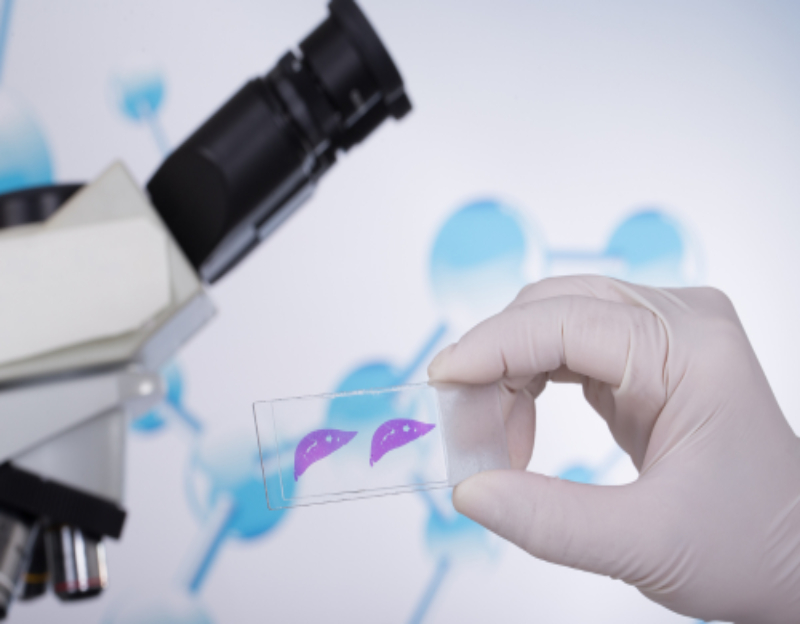
28 Oct, 2025
Feel free to reach out to us.

28 Oct, 2025
A biopsy is a medical procedure that involves obtaining a small tissue sample from the body for examination under a microscope. One of the biggest uses of biopsy includes diagnosing various conditions, including cancer, infections, and autoimmune diseases. Biopsies can be done using multiple methods, such as needle biopsy, surgical biopsy, or endoscopic biopsy. Results of biopsy guide treatment decisions and provide valuable information about the patient's health.
The following are the different types of biopsies:
A biopsy is generally performed by a trained healthcare professional such as a surgeon, dermatologist, gastroenterologist, or radiologist, depending on the types of biopsies and the body area requiring sampling. Once the sample is collected, it is sent to a pathology laboratory, where pathologists analyze it. Pathologists are medical doctors who specialize in examining tissues and cells under a microscope to make a diagnosis.
The following are the most common purposes of biopsy:
Before a biopsy, the doctor reviews the medical history and performs a physical examination. Depending on the types of biopsies, additional preparation may include fasting, discontinuing certain medications like blood thinners, or obtaining consent. Patients are informed about the procedure and potential risks.
During a biopsy, the patient is positioned appropriately. The area under biopsy is cleaned and numbed with a local anesthetic. The doctor then uses specialized instruments to collect tissue or fluid samples. Depending on the types of biopsies, this may involve needle insertion, surgical removal, or endoscopic techniques. The doctors sent the samples to a laboratory for analysis.
After a biopsy, the patient may experience mild discomfort or bleeding at the biopsy site. It can be managed with pressure and a bandage. The collected samples are sent to a pathology laboratory for analysis. The biopsy test timeline may depend on the types of biopsies. Biopsy test results are usually available within a few days to a week. Further treatment options may be discussed with the patient, depending on the findings.
Patients often ask about the uses of biopsy, its potential risks and costs, and what to expect during and after the procedure. They may inquire about any discomfort, recovery time, and restrictions afterward. Patients often require clarity on how the biopsy results will impact their diagnosis and treatment plan, including follow-up steps and possible alternative options.
A biopsy is necessary for diagnosing various conditions, including cancer and infections. It provides valuable insights into tissue structure and cellular abnormalities. The uses of biopsy include guiding treatment decisions and improving patient outcomes. It may involve a minimally invasive needle biopsy or a more invasive surgical procedure. Biopsies allow tissue samples to be obtained for precise diagnosis and tailored treatment strategies.
Biopsies may cause discomfort. However, local anesthesia is often used to minimize pain during the procedure.
Although a negative biopsy reduces the likelihood of cancer, it is not a guarantee of cancer-free status. Sometimes, cancerous cells may not be present in the sampled area.
A biopsy determines the presence of cancer. Determining the staging of cancer involves additional tests like imaging studies to assess tumor size and spread, along with a biopsy.
Common side effects of a biopsy include mild pain or discomfort, bleeding, bruising, and infection at the biopsy site. Serious complications are rare but can occur.
Patients who undergo invasive biopsies may experience more pain and discomfort than the patients who underwent minimally invasive procedures.
Biopsies carry minimal risks, such as bleeding, infection, or damage to nearby structures. Doctors take precautions to minimize potential risks.
Bleeding after a biopsy is usually minimal and stops within a few minutes. Occasionally, slight oozing may persist for a day or two but can be effectively managed through appropriate interventions.
Biopsies may leave small scars, mainly if surgical or punch biopsy techniques are used. However, scars are typically minimal and fade over time, especially with proper wound care.